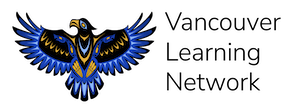Visual Arts 9
Visual Arts 9 Course Overview
Big Ideas
People create art to express | Engagement in the arts | Dance, drama, music, and | People connect to others and share ideas through the arts. |
From: https://curriculum.gov.bc.ca/curriculum/arts-education/9/visual-arts
Introduction
In Visual Arts 9, students learn about the evolution of art, the basic principles of art and design, and the role of art in politics and society. This course will have you exploring all things digital such as advertising, animation, and photography. You will also create your own digital art and make it come alive.
Where does this course fit?
- Pre-Requisite: None
- Graduation Status: One of the Grade 10/11/12 ADST/Arts Education options for graduation
Course Materials
- You will find readings, videos and other resources linked to the course pages.
Brief Outline
Unit | Description |
Unit 1 - Digital Art | Discover what it means to be a digital artist or designer. Explore some of the tricks and techniques used in digital art, along with careers in this field. |
Unit 2 - Say Cheese! | Studying the art of photography in this unit will teach you to identify and apply the elements and principles of design in photography. We will also look at the history of photography. |
Unit 3 - The Evolution of 2-Dimensional Art | Today, digital art is everywhere, but we are not the first society to value art. Both 2D and 3D art play an important role in the artistic forms of the past and present. In fact, today’s digital artists often need to know how to move back and forth between these two types of art. |
Unit 4 - Graphic Design | Graphic design combines the power of text and pictures to create persuasive images that communicate a specific message. It is used in advertising, entertainment, and politics. There are many ways in which art and language work together to educate and inform us. |
| Animation isn’t only in movies and cartoons. It’s in video games, interactive websites, smartphone interfaces, and so much more. If you stop and think about it, you’ll likely be surprised by how much animation is in your day. Although animation started off simply, it has become a big part of popular culture. |
Unit 6 - Sound and Music | Music is definitely part of our everyday lives, having evolved over time due to technology and our changing tastes. Like other forms of art, music tells us a lot about what is currently happening in society. When it comes to the digital arts, sound is another important piece of the puzzle. |
Unit 7 - How to Look at and Evaluate Art | What makes a piece of art famous? What do critics think about when they are deciding if something is good or not? You’ll explore these questions and more as you learn how to think like an art critic. |
Unit 8 - Mixing Up Art | Multimedia involves mixing different types of art or materials to make a new work. In this unit students will create multimedia pieces, discuss the intent of their work, and put together a portfolio. |
Assessment Percentage Breakdown
Assessment Type | Percentage of the Course |
Assignments | 57% |
Discussions | 4% |
Quizzes | 4% |
Midterm exam | 15% |
Final exam | 20% |
Your final assessment will be represented on this Proficiency Scale.

You have up to a year to complete your course.

